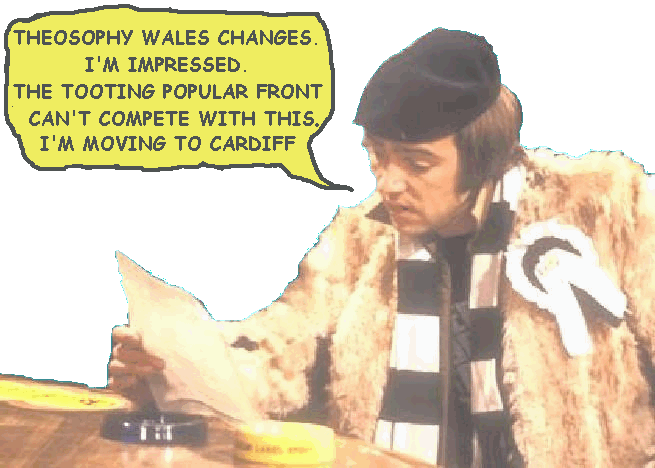Guide
to
PENDLE
HILL
Nearest
Towns
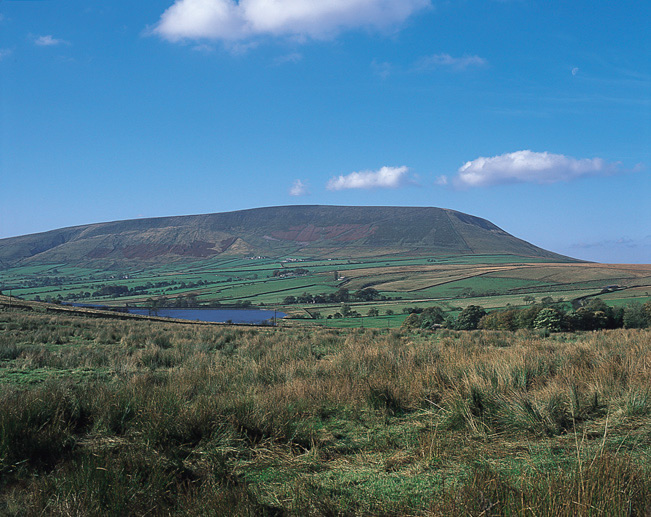
Pendle
Hill is located in the north-east of
Geology
The sloping plateau summit
of Pendle Hill is formed from the Pendle
Grit, a coarse Carboniferous age sandstone assigned to
the Millstone Grit Group. It overlies a thick sequence of Carboniferous
Limestone beds.
Much of the lower slopes
are mantled by thick deposits of glacial till or boulder clay dating from the
last Ice Age. The historic decomposition of sphagnum moss on the hill has led
to it being covered in peat.
The steep slopes of its
eastern and southern flanks have given rise to a series of landslips.
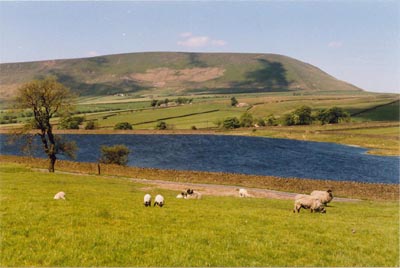
History
The phrase Pendle Hill is unusual in that it combines the word for
hill from three different languages. In the thirteenth century the hill was
mentioned as Pennul or Penhul;
apparently from Cumbric pen and Old English hyll, both meaning "hill". The modern English
hill was appended later, after the original meaning of Pendle
had become opaque.
Pendle
Hill is famous for its links to three events which took place in the 17th century:
the Pendle witch trials (1612), Richard Towneley's barometer experiment (1661), and George Fox’s
vision (1652), which led to the foundation of the Quaker movement. A Bronze Age
burial site has been also discovered at the summit of the hill.
The most popular route for
ascending the hill begins in the
A local saying suggests the
area around Pendle Hill experiences frequent
rainfall: "If you can see Pendle then it's about
to rain, if you can't then it's already started." When it's not raining,
and there's a usable northwesterly wind, Pendle is a
popular hill-launch for paragliders and hang gliders.
George
Fox’s Vision and the
Foundation
of the Quakers
In 1652, George Fox claimed
to have had a vision while on top of Pendle, during
the early years of the Religious Society of Friends (Quakers). Today, the name Pendle remains strongly linked with the Quakers, giving its
name to one of their centres for religious and spiritual study and
contemplation in the
As we travelled, we came near a very
great hill, called Pendle Hill, and I was moved of
the Lord to go up to the top of it; which I did with difficulty, it was so very
steep and high. When I was come to the top, I saw the sea bordering upon
—George Fox: An
Autobiography, Chapter 6
Pendle witches
The story of the Pendle witches is the best known example of alleged
witchcraft in English history. The hill continues to be associated with
witchcraft and large numbers of visitors climb it every Hallowe'en,
though in recent years people have been warned away by the authorities.
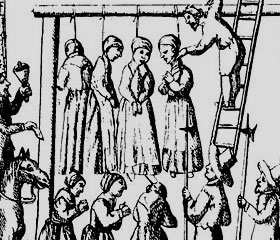
The
Trial of the Pendle Witches
The arrest and trial of the
so-called Pendle Witches is probably the most well-known
of the witch trials that took place in the
Despite received wisdom and
lurid B-movies,
All over mainland
However, even for these
low-level accusations, any given trial was not a foregone
conclusion. Torture was not generally used to extract confessions, and it
was not unusual for cases to be dismissed from court due to
fabricated evidence or pre-existing animosity with accusers - at the same
trials where the Pendle Witches were convicted, other
so-called witches were acquitted.
In 1612, James I had been
on the throne for nine years, and had already survived one major attempt on his
life by Catholic conspirators in the Gunpowder Plot of 1605. The paranoia
about Catholic plots was high, and the persecution of non-conformists was a
daily fact of life - in the Pendle area at that time
there was much concern about the fact that the Catholic faith was still being practised widely in private ceremonies throughout the
county. It is also worth noting that James was a strong believer in
witchcraft and wrote a book on the subject. While the instances of witchcraft
trials were not especially high during his reign, there was certainly the opportunity
for young magistrates to try and make their name by taking accusations of
witchcraft seriously and prosecuting them publicly.
In the Pendle
area at that time were two families - the Demdikes
and the Chattoxes - each of which were ruled by old
matriarchs who both had reputations locally for being witches. It seems
that they did nothing to contradict these reputations and in fact used them to
gain work as healers or to extort money with threats. The two families
were also at each others throats over an old debt, and considered each other
rivals.
Events Leading Up To The Trial
In March 1612, Alizon Device, the grand-daughter of Elizabeth Southerns (better known locally as Old Demdike),
cursed a pedlar who refused to give her some
pins. The pedlar collapsed by the side of the
road and Alizon was convinced that she was
the cause, immediately confessing to him and asking for
forgiveness, which he gave.
His son later heard about
this and brought the event to the attention of the local authorities, claiming
that when the pedlar refused Alizon's begging, a large dog appeared, and then the pedlar fell to the ground and became paralyzed.
She was brought before the
local magistrate, Roger Nowell, who does seem to have
genuinely believed in magic and witchcraft. Amazingly, she immediately
confessed to the crime, although Nowell used no means
of torture, "tests" or overt persuasion. As well as fully
confessing to the crime, Alizon implicated her
grandmother and Anne Whittle (known as Chattox)
by recounting tales of how they had caused harm to neighbours
and livestock in the area.
In early April 1612, Old Demdike, Chattox and Chattox's daughter Anne Redfearn
were also interrogated about their alleged witchcraft. Demdike immediately confessed practising withcraft, and claimed that the devil had sucked her blood
and driven her mad. All four of the accused were sent to
Shortly afterwards, it was
reported to the authorities that there had been a gathering at
On questioning, the
youngest member of the Device family, Jennet, then aged 9,
confirmed the story of the witches sabbat and claimed
that during the meeting, plans were made to attack
Trial and Punishment
An old woman of ill
health, Old Demdike died in gaol
during the summer while awaiting trial. The trial itself did not take
place until August 1612, but when it did,
Jennet Device, despite her age, was the star witness.
Anne Whittle (Chattox), Alizon
Device, Elizabeth Device, James Device, Alice Nutter, Katherine Hewitt, John Bulcock, Jane Bulcock, and
Isobel Robey were all tried and found
guilty of the preliminary charges. Anne Redfearn
was found guilty on a further charge. They were all sentenced to be
hanged. Margaret Pearson was found guilty of a minor offence and escaped
the death sentence - instead being sentenced to punishment in the stocks.
On August 20th, the ten
were hanged at
In an ironic twist, after
condemning her entire family as witches at the 1612 trial, Jennet Device was
herself to be arrested several years later on charges of witchcraft, and
despite the charges being dismissed due to new laws which stated that
witchcraft was merely superstition, she is believed by most historians to have
died in gaol.
No one will ever know what
prompted the confessions that the Devices gave freely - in the absence of
torture, it can only be assumed that there was hope that by condemning others
they might gain their own freedom - or perhaps Roger Nowell
was a skillful manipulator. Whatever the case, the Pendle
Witches and their trial have retained their notoriety and their mystery through
the centuries and still generate a lot of interest today, among both historians
and pagans.
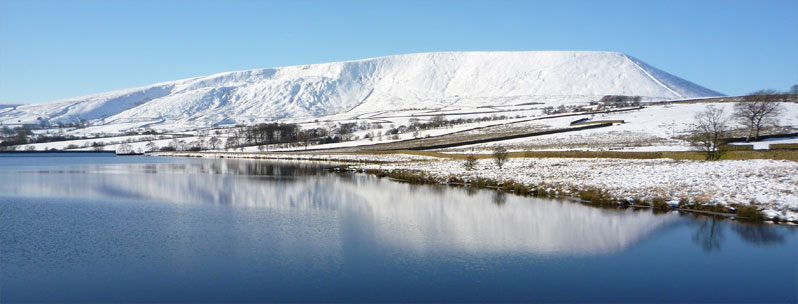
Merlin’s Vision
There is a
story that in his early years Merlin, the Magician of Arthurian Legend, travelled the
He was
exploring the area around the River Belisama (Ribble, East Lancashire/Yorkshire Dales). He climbed Pendle Hill near
The
prophecy of the coming invasions of the
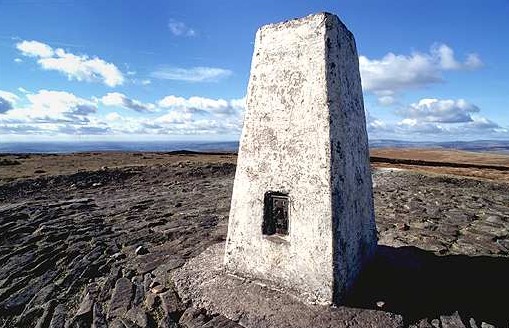
The
Triangulation Point on the summit of Pendle Hill
Most
Haunted
The area is now popular
with ghost hunters after Living channel's top show Most Haunted visited the
hill for a live investigation on Halloween 2004. The show's presenter, Yvette
Fielding, said it was the scariest episode they had made to date and the
episode is still widely considered as the scariest episode of the entire
series.
On 30 October, the
programme visited
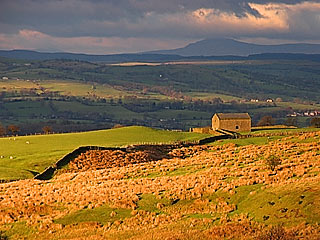
_____________________________
Theosophy
Links
Cardiff Theosophical
Society meetings are informal
and there’s always a cup of tea afterwards
The
Cardiff Theosophical Society Website
The
National Wales Theosophy Website
Bangor,
Cardiff, Conwy & Swansea
If you
run a Theosophy Group, please feel free
to use any of the
material on this site
The Most Basic Theosophy
Website in the Universe
A quick overview of Theosophy
and the Theosophical Society
If you run a Theosophy Group you
can use this as an introductory handout.
Theosophy Cardiff’s Instant Guide
Theosophical Movement in Wales
as
it separates into independent
groups that run do their own show
One liners and quick explanations
H P
Blavatsky is usually the only
Theosophist
that most people have ever
heard of. Let’s
put that right
The Voice of the Silence Website
An
Independent Theosophical Republic
Links
to Free Online Theosophy
Study
Resources; Courses, Writings,
The main criteria for the inclusion of
links on this site is that they have some
relationship (however tenuous) to Theosophy
and are lightweight, amusing or entertaining.
Topics include Quantum Theory and Socks,
Dick Dastardly and Legendary Blues Singers.
A selection of articles on Reincarnation
Provided in response to the large
number of enquiries we receive at
Cardiff Theosophical Society on this subject
The Voice of the Silence Website
This is for
everyone, you don’t have to live
in Wales to make
good use of this Website
No
Aardvarks were harmed in the
Within the British Isles, The
Adyar Theosophical Society is the
largest
Theosophical Body and has Groups in;
Bangor*Basingstoke*Billericay*Birmingham*Blackburn*Bolton*Bournemouth
Bradford*Bristol*Camberley*Cardiff*Chester*Conwy*Coventry*Dundee*Edinburgh
Folkstone*Glasgow*Grimsby*Inverness*Isle
of Man*Lancaster*Leeds*Leicester
Letchworth*London*Manchester*Merseyside*Middlesborough*Newcastle upon Tyne
North Devon*Northampton*Northern Ireland*Norwich*Nottingham
Perth*Republic of Ireland*Sidmouth*Southport*Sussex*Swansea*Torbay
Tunbridge Wells*Wallasey*Warrington*Wembley*Winchester*Worthing
The Spiritual Home of Urban Theosophy
The Earth Base for Evolutionary Theosophy
The Birmingham Annie Besant Lodge
_________________________
The Theosophy Cardiff Guide to
The Theosophy Cardiff Guide to
The Theosophy Cardiff Guide to
The Terraced Maze of Glastonbury Tor
Glastonbury and
Joseph of Arimathea
The Grave of King Arthur & Guinevere
Views of Glastonbury High Street
The Theosophy Cardiff Guide to
_____________________
Camberley Surrey England GU15 2LF
Tekels Park to be Sold to a Developer
Concerns are raised about the fate of the wildlife as
The Spiritual Retreat, Tekels Park in Camberley,
Surrey, England is to be sold to a developer
Future
of Tekels Park Badgers in Doubt
Magnificent
Tekels Park to be Sold to a Developer
____________________
A
B
C
D
EFG
H
IJ
KL
M
N
OP
QR
S
T
UV
WXYZ
Complete Theosophical Glossary in Plain Text Format
1.22MB
Quick
Explanations with Links to More Detailed Info
What is Theosophy ? Theosophy Defined (More Detail)
Three Fundamental Propositions Key Concepts of Theosophy
Cosmogenesis
Anthropogenesis
Root Races
Karma
Ascended Masters After Death States
Reincarnation
The Seven Principles of Man Helena Petrovna Blavatsky
Colonel Henry Steel Olcott William Quan Judge
The Start of the Theosophical Society
History of the Theosophical Society
Theosophical Society Presidents
History of the Theosophical Society in Wales
The Three Objectives of the Theosophical Society
Explanation of the Theosophical Society Emblem
Glossaries of Theosophical Terms
An Outstanding Introduction to Theosophy
By a student of Katherine Tingley
Elementary Theosophy Who is the Man? Body and Soul
Body, Soul and Spirit Reincarnation Karma
What Theosophy Is From the Absolute to Man
The Formation of a Solar System The Evolution of Life
The Constitution of Man After Death Reincarnation
The Purpose of Life The Planetary Chains
The Result of Theosophical Study
An Outline of Theosophy
Charles Webster Leadbeater
Theosophy - What it is How is it Known? The Method of Observation
General Principles The Three Great Truths The Deity
Advantage Gained from this
Knowledge The Divine Scheme
The Constitution of Man The True Man Reincarnation
The Wider Outlook Death Man’s Past and Future
Cause and Effect What Theosophy does for us
Try these if you are looking
for a local
Theosophy Group or Centre
UK Listing of Theosophical Groups
Please tell us about your UK Theosophy Group
___________________
into categories and presented according to relevance of
website.
Web Directory
- Add Link - Submit Article - Online Store - Forum
______________________
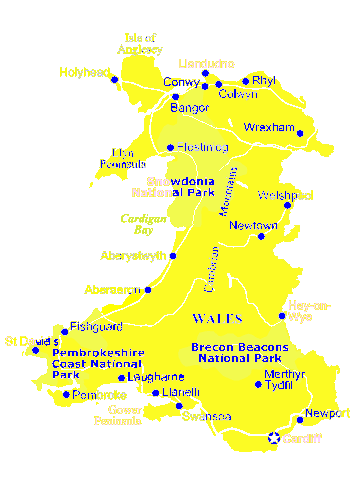
General pages about Wales, Welsh History
and The History of Theosophy in Wales
Wales is a
Principality within the United Kingdom and has an eastern
border with England. The
land area is just over 8,000 square miles.
Snowdon in North Wales is
the highest mountain at 3,650 feet.
The coastline is
almost 750 miles long. The population of Wales
as at the 2001 census is 2,946,200.
________________
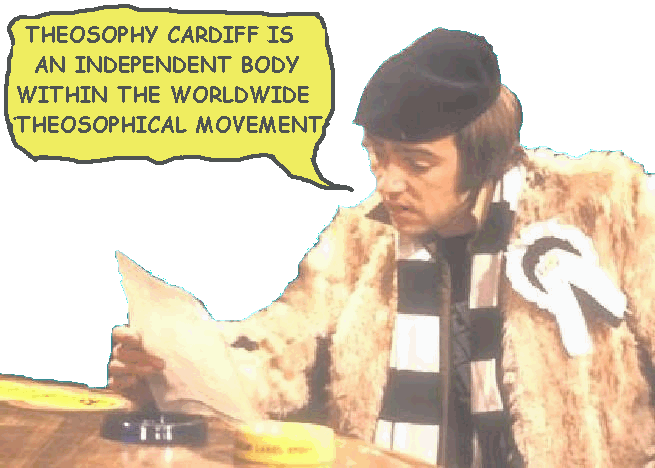
Bangor Conwy
& Swansea Lodges are members
of the Welsh
Regional Association (Formed 1993).
Theosophy Cardiff separated from the
Welsh Regional
Association in March 2008 and became an independent
body within the Theosophical Movement in March 2010
High
Drama & Worldwide Confusion
as Theosophy
Cardiff Separates from the
Welsh
Regional Association (formed 1993)
Theosophy Cardiff cancels its Affiliation
to the Adyar Based Theosophical Society
Cardiff, Wales,
UK, CF24 – 1DL


